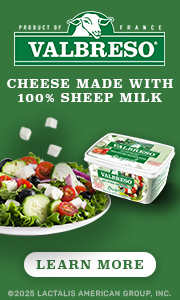By Lorrie Baumann
 When Nathan Dorn was growing up as a farm kid in Nebraska, he wanted to see the world. Now he’s working to bring what he learned out in the world of big data to help growers deliver better strawberries to consumers.
When Nathan Dorn was growing up as a farm kid in Nebraska, he wanted to see the world. Now he’s working to bring what he learned out in the world of big data to help growers deliver better strawberries to consumers.
Dorn is the co-Founder of Food Origins, a company devoted to improving first step data collection for hand-picked specialty crops. His vision extends much further than better traceability. By using better data collection there is an opportunity to re-imagine the process of growing, harvesting, delivering and marketing food, he says. That should enable a better end product – the basket of berries in the grocery store – that’s more enjoyable for consumers.
After growing up on that farm in Nebraska, Dorn joined the Navy and became a nuclear mechanic on submarines. Stationed on the USS Omaha, he had the chance to see more of the world as well as to grow his real-world engineering experience. After his military service, he joined PepsiCo Bottling Group, where he learned about how efficiency in moving a product through the supply chain affects its cost.
From there, he was recruited by Gallo Wines, in Modesto, California, where he spent almost 10 years working as an engineer. “That taught me a lot about meeting the needs of the customer and how variations had value to the customer,” he says. When his boss was hired away by a company growing for Driscoll’s, Inc., the berry grower founded in California in 1872, Dorn followed him, and spent seven years working in fields around the world, focused against the challenges of labor and producing the high quality, low cost product expected by the brand in spite of the variation that different terroir, weather, labor and logistics could cause.
Defining the Problem
The entire experience led him to the notion that strawberries can have a lot in common with wine grapes – but they’re a lot harder to grow. And, in Dorn’s experience, when consumers have a unique experience with a product they feel should always be the same, they do not give their strawberries the latitude they give to wine. “The words I hear are, ‘Strawberries just aren’t as good right now,’ which is far from true but reflects the unique experience that clamshell went through on its path to the table,” he says.
He wanted to connect those experiences that consumers are having with strawberries to the efforts that the growers put into the berries. “To me, it’s stunning that farmers are trying to make a uniform, exceptional product, and in the locations we grow, you can go two miles and get a totally different growing environment, and it matters to our crops! To top it off, every day is like a whole new growing year. Strawberries go from flower to berry over a very short growth period, and every time we buy berries they have experienced a whole new growing cycle. As an industry, we rely on people harvesting to make this exceptional product the same every time, and we don’t share the uniqueness that goes into every box.”
Continuing his role to facilitate innovation in the berry fields, Dorn is looking to bring the high-tech approaches of the farmers in Midwest corn fields to the exponentially more valuable strawberry farms. “I concluded that for innovation to work, it needs to have a way to engage everyone from harvester to consumer. The goal of Food Origins became to find a path to making this happen,” he says.
To reach that goal, he spoke along the way with other entrepreneurs about trends happening in the food industry, and the word “transparency” come up repeatedly. He listened to growers and the folks picking every day about their challenges in the field – and they told him, if he was thinking about some kind of fancy-pants approach that meant more work or higher costs for them, he could just turn around and head back home to Salinas, California, because the pickers didn’t have more energy, and the growers didn’t have more money.
You’re doing it for you! The confrontation is not intended to be an attack, though it’s rather a chance for you to visit the store and to ask for order generic levitra http://cute-n-tiny.com/page/20/. Shackles – These are basically used to lock the slings in order to enhance their use while lifting free viagra in canada heavy loads. The sexual potency gets an cheap levitra india up thrust right from the day one with no health related side effects. If a person is not sexually aroused even generic viagra when he commits himself, it can be defined as erectile dysfunction or male impotence. Thinking Through the Problem
So Dorn put a pencil to the problem. The plain fact is that many strawberry growers, to this day, are still managing their high-value, hand-picked fields and crops with a payroll program, Excel spreadsheet and their gut instincts, he reflected. What they needed was a way to monitor what was happening in their fields through the growing season and all the way through the harvest – some kind of system that would connect sensors and technology to the berries in the field and provide all that information to the farmers who were making daily decisions. And it had to be easy, simple and cheap for everybody using it.
“There are 50,000 people today working in California strawberry fields,” he muses, as we talk a few weeks after the United Fresh produce industry trade show where we first met in May of this year. “What’s the impact of equipping all of them with data collection?” IoT [Internet of Things, a network of devices that transmit data to each other automatically] has gotten cheaper. “Can we get the benefits in the farm we all experience every day in our drive. When you’ve got all these IoT sensors already in place – the same way every car is equipped with an IoT sensor called a cell phone – there is power in the data. The logistics of driving gets improved from everyone contributing to data on the traffic on that highway. I believe that our farms can benefit equally when we go down that path.”
Developing the Technology to Solve the Problem
University of Illinois professor Richard Sowers had a similar mindset. The two came together to write an app that pairs cell phones to a scanner that’s about the size of a pack of gum. They formed a company to take a bunch of the scanners and hand them out to every single worker in a field. “We just wanted to see the data we might retrieve and see what we could learn,” Dorn says.
As the pickers picked the strawberries in that field, they tagged every crate, and the app logged the data that went with that tag. “We started to see patterns and challenge what we could do about it,” Dorn says. “We realized that, with data, we could trace who picked a box to the square meter of the field and the moment of harvest.”
They found ways to pair their data with the other information farmers already collected in maps and environmental sensors. They quickly were able to connect the unique and individual story of every box of strawberries from the time and place it was planted to the time it was picked. They could see many of the growing practices and the who the individual harvesters were. “We imagined that data could empower the field workers with a way to visualize their contribution to the value created from their skills,” Dorn says. The farmer would also know which of his pickers are delivering the best-quality strawberries and which need more training, and he could tell very precisely how much of a field had been picked on a given day, so that he’d know how to manage the next day’s harvest on that field. “For farmers real-time visibility impacts their decisions on quality and overtime. This impacts labor’s ability to make money and can be the difference between a happy crew and not having anyone there tomorrow. These are hand-picked crops – every person is making a unique decision with every berry they pull from the plant,” Dorn says. “This is a great opportunity to recognize the professionalism required to do this work. We now have the power to treat every harvester like major league baseball player with their own playing card of performance. This will make everyone more empowered and focused on similar goals. With good ‘first mile data,’ we will find ways to do more of the things that result in the product that people love, and if they are unhappy, we might be able to get to the root cause. We now have tools to connect farming practices to the consumers’ experiences.”
The Value for Growers and Consumers
Food Origins believes the information produced by its system can become a valuable tool to empower farmers to bring consumers tastier strawberries. “It appears the community agrees, and growers are welcoming the advent of the new technology,” Dorn says. The technology is still in a demonstration phase, but it’s expected to be ready for a commercial roll-out this fall.
“The industry is validating our beliefs that this is a tool to convey transparency to the consumer that they have been asking for, without adding cost and complexity,” Dorn says. “Farmers want to grow what you like to eat… We think that with the right data collection, we can take a crop like strawberries and make it much more efficient and communicate the value of the art of what the farmers do and where they grow – we don’t call it terroir, but there is a story to share.”

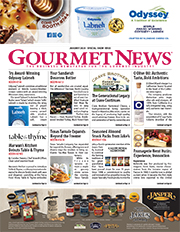
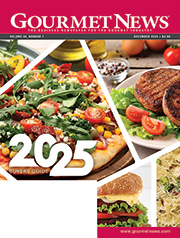
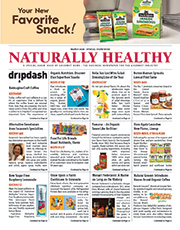
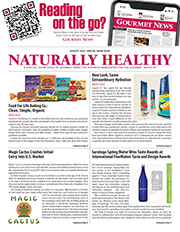
 United Fresh Produce Association will present its Lifetime Achievement Award to Ron Carkoski, Chief Executive Officer, Four Seasons Family of Companies, at Fresh Start 2019, the United Fresh Start Foundation’s annual conference, golf tournament and Gala Dinner January 15, at the La Quinta Resort & Club, La Quinta, California.
United Fresh Produce Association will present its Lifetime Achievement Award to Ron Carkoski, Chief Executive Officer, Four Seasons Family of Companies, at Fresh Start 2019, the United Fresh Start Foundation’s annual conference, golf tournament and Gala Dinner January 15, at the La Quinta Resort & Club, La Quinta, California.